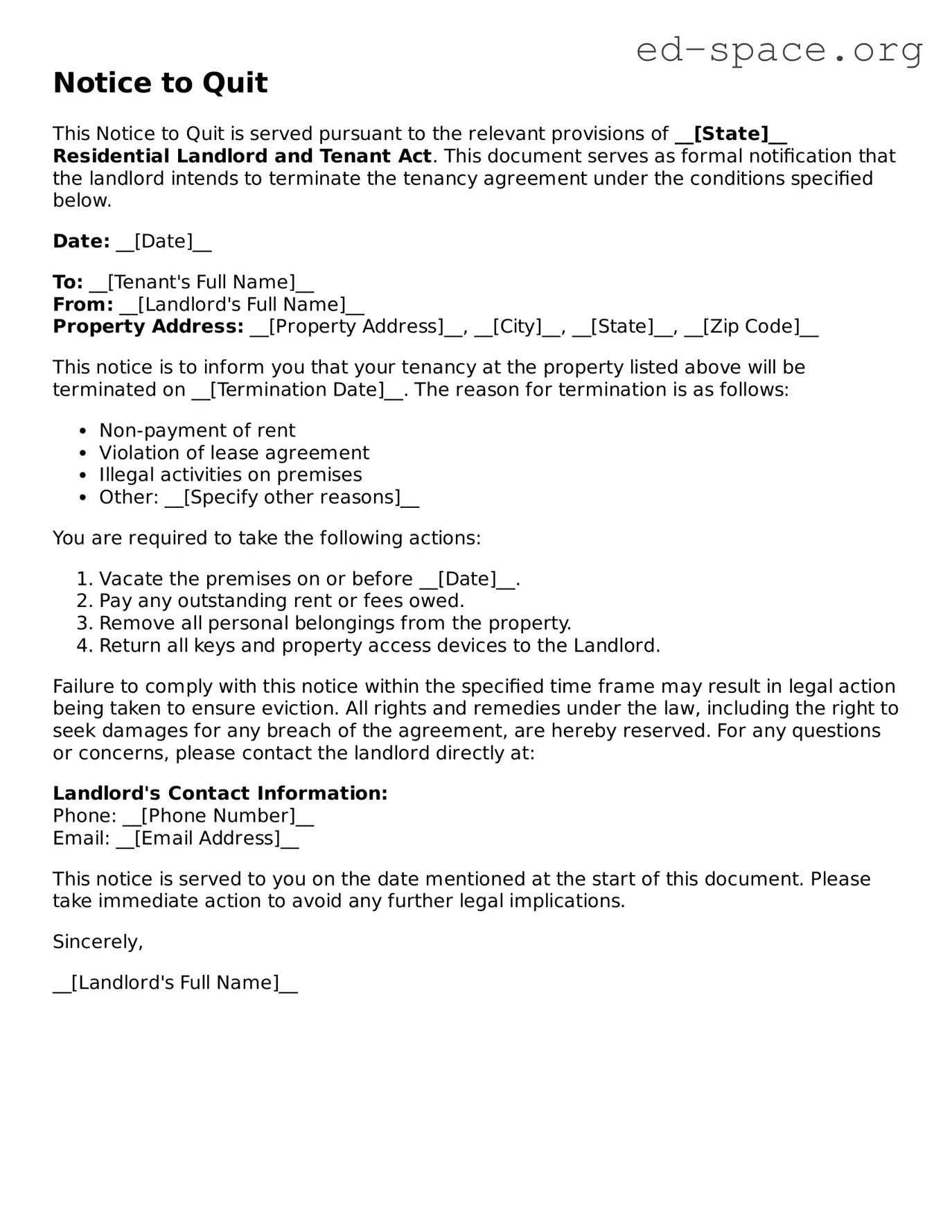What is a Notice to Quit?
A Notice to Quit is a document a landlord sends to a tenant to end the tenancy. It states the tenant must leave the rental property within a specified time frame due to certain reasons, such as non-payment of rent or violation of lease terms.
When is a Notice to Quit necessary?
This notice is necessary when a landlord wants to terminate a rental agreement with a tenant because of lease violations or other issues like non-payment of rent. It's a legally required first step in many states before the landlord can file for eviction.
What information should be included in a Notice to Quit?
The notice should include the name of the tenant, the rental property address, the reason for the notice (such as late rent), the time frame the tenant has to rectify the issue or vacate, and the landlord’s signature. Some states may require additional details.
How long does a tenant have to respond to a Notice to Quit?
The response time varies by state and the reason for eviction. For example, tenants may have fewer days to respond to a notice for non-payment of rent compared to a notice for other lease violations. It’s crucial to check local laws for specific time frames.
Can a tenant dispute a Notice to Quit?
Yes, tenants can dispute a Notice to Quit if they believe it's unjustified. They might be able to correct the issue that led to the notice or they may challenge the eviction in court, depending on the circumstances and local laws.
What happens if a tenant ignores a Notice to Quit?
If a tenant ignores the notice and remains on the property past the specified period, the landlord may proceed with filing an eviction lawsuit. Ignoring the notice does not halt the eviction process and may, in fact, weaken the tenant's position in court.
Is a Notice to Quit the same as an eviction notice?
While often used interchangeably, a Notice to Quit is technically a precursor to an eviction notice. It alerts the tenant to the landlord's intention to terminate the lease if conditions are not met, whereas an eviction notice is a formal legal document that initiates the court process.
Does delivering a Notice to Quit require legal assistance?
While legal assistance is not strictly necessary to draft and deliver a Notice to Quit, consulting with a legal expert can ensure the notice complies with state laws and regulations, which can vary widely. Legal consultation can also help in understanding the proper way to serve the notice.
How does a landlord serve a Notice to Quit?
Methods of serving a Notice to Quit can include personal delivery to the tenant, mailing it via certified mail with a return receipt, or leaving it in a conspicuous place on the property. The acceptable methods of delivery vary by state, so it is important to follow local guidelines.
What can a tenant do upon receiving a Notice to Quit?
Upon receiving a Notice to Quit, a tenant should first read it carefully to understand the reason for the notice and the deadline for action. Then, they can choose to correct the issue, reach out to the landlord to discuss a resolution, or prepare to vacate the property. If disputing the notice, seeking legal advice may be beneficial.
